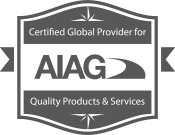This Workshop will assist in transitioning from the AIAG 4th Edition FMEA to the AIAG & VDA FMEA Handbook. Learn to execute Design FMEA according to the new Handbook by achieving a deeper understanding of the explicit and subtle changes, along with the high impact benefits that will bring your organization’s FMEA to the next level of robustness.
The AIAG & VDA Design FMEA: Transitioning for Practitioners training course gives only a high level introduction to the “Supplemental FMEA for Monitoring and System Response” content in the Handbook. This class was not designed to provide detailed instruction, examples, or exercises on the FMEA-MSR topic. A separate focused training course for the FMEA-MSR is under development. Please use the link below to let us know you are interested in getting more details on the upcoming FMEA-MSR training course as they become available.
https://www.aiag.org/quality/automotive-core-tools/fmea#fmeaMSR

Enroll a single participant, or request a quote for a live session for just your team.

Length
2 Days
*For private workshops for your organization, a one (1) day add-on Application Coaching Workshop service is available (i.e. facilitated development of a partial FMEA based on the Implementation Plan).
Prerequisites
Live Virtual Only:
Required
Knowledge & Experience:
Equipment Needed (Live Virtual Only):
Recommended
Live Virtual only: A second monitor is highly recommended for optimal learning environment.
Analyze the major changes and improvements adopted in the new AIAG & VDA FMEA handbook by completing a detailed comparison to the AIAG 4th Edition manual
Recommended for Core Design FMEA Team to include design engineers, system engineers, component engineers, test engineers, quality/reliability engineers, project managers, FMEA moderators/facilitators, auditors, and other product design roles with a background and experience with AIAG Design FMEA.
Combining the best of online and traditional face-to-face learning, Live Virtual Workshops use web-based teleconferencing technologies to bring your team together with our experienced instructors in an interactive learning environment. We have always believed interactivity, application, and group discussion are critical parts of an effective and sustainable learning experience. To ensure that these values hold true, and every participant can build the same caliber of knowledge, each workshop includes the following Live Virtual functionality and features:
Technical risk mitigation is crucial for business sustainability during this era of high-speed adoption of technology innovation affecting all automotive systems, subsystems, and components. There is a general recognition of the urgent need for conducting effective Design Failure Mode and Effects Analysis (DFMEA). This challenge cannot be addressed without a robust methodology. This makes the new AIAG & VDA FMEA Handbook a critical update for the industry. The concept of robustness exists throughout all sections of the new DFMEA development approach, which is presented in the new AIAG & VDA Handbook. The Handbook contains a structured method for identifying products’ functions and their potential failure modes.

Questions about the privacy and security of our Live Virtual Solutions? Learn more
Participants of this web-based Live Virtual Training Seminar will learn Design FMEA fundamentals based on AIAG & VDA FMEA Handbook.
FMEA Boot Camp Virtual Seminar Series: Learn the fundamentals of the AIAG & VDA FMEA, linkages between DFMEA, PFMEA, and Control Plans, and how to connect your risk mitigation efforts to the Cost of Quality.
Learn efficiently and cost effectively from anywhere in the world with Live Virtual Training and Consulting. Take advantage of interactive and collaborative learning you and your team need without leaving the home or the office.
Subscribe to our newsletter.